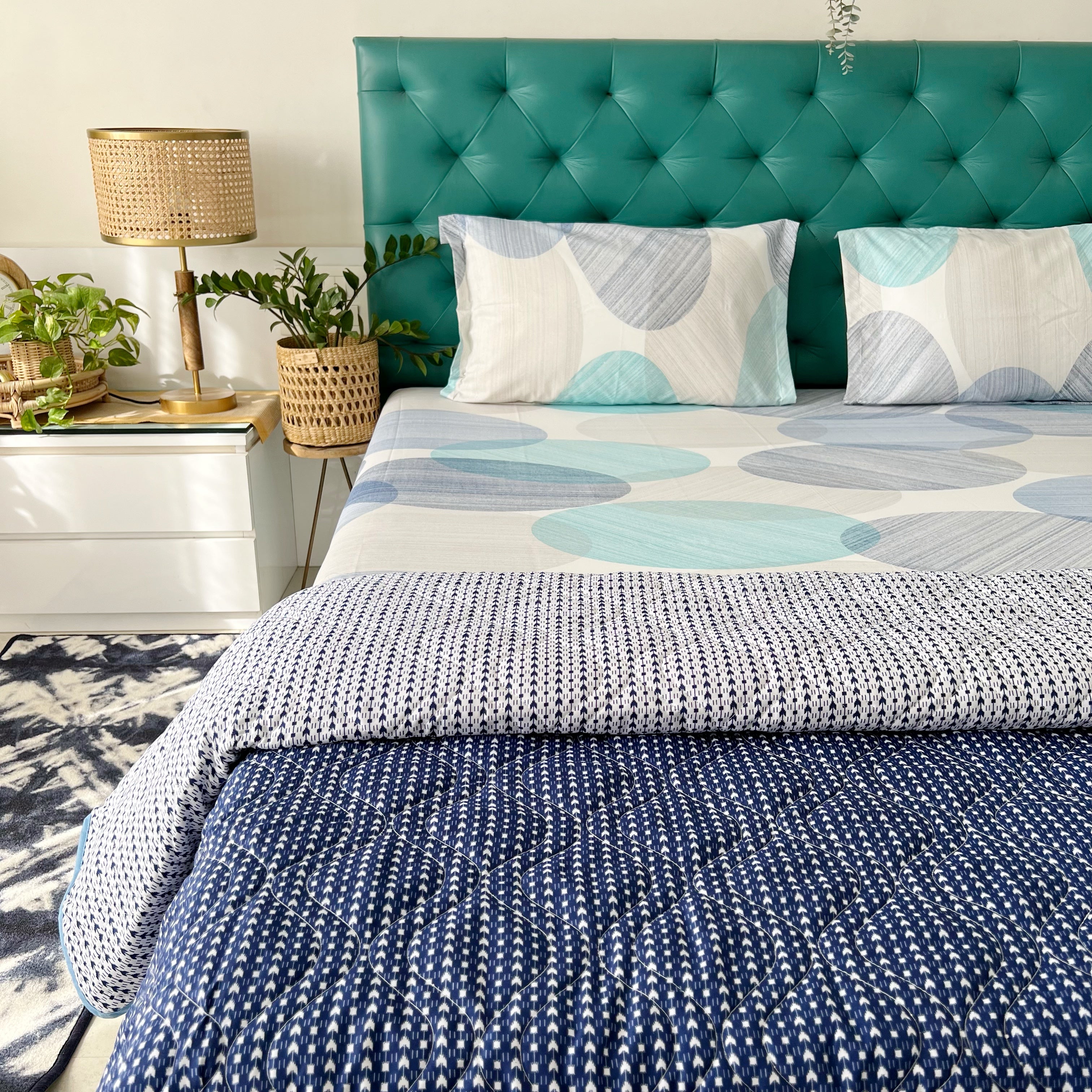Bedding Hygiene and Longevity: The Key to Clean and Comfortable Sleep

Introduction:
Maintaining proper bedding hygiene is essential for a clean and healthy sleep environment. Regularly changing bedsheets not only promotes cleanliness but also ensures a comfortable and refreshing sleep experience. In this blog post, we will explore the significance of bedding hygiene, recommended bedsheet changing frequency, signs of wear and tear, and the lifespan of bedsheets. Let's dive in and discover the secrets to maintaining clean and durable bedsheets!
I. Bedding Hygiene: A Path to Clean and Healthy Sleep

Proper bedding hygiene is a trending topic as people become more conscious of the importance of cleanliness in their sleep environment. It involves regular washing and changing of bedsheets to eliminate dirt, sweat, allergens, and bacteria. Maintaining bedding hygiene contributes to better sleep quality, reduces the risk of allergies and skin irritations, and creates a fresh and inviting atmosphere in the bedroom.
Read more: The Art of Bedsheet Maintenance: When to Change and How to Care for Your Sheets
II. Recommended Bedsheet Changing Frequency: Finding the Balance
- Personal Hygiene and Individual Factors: The recommended bedsheet changing frequency may vary depending on personal hygiene habits, individual preferences, and specific circumstances. Factors such as allergies, excessive sweating, and climate conditions can influence how often bedsheets should be changed.
- General Recommendations: As a guideline, it is commonly recommended to change bedsheets every 1 to 2 weeks for optimal hygiene. However, if you have specific needs or circumstances, you may choose to change them more frequently.
III. Signs of Wear and Tear: Knowing When to Replace Bedsheets

- Fraying Edges: Fraying edges are a common sign of wear and tear on bedsheets. When you notice frayed or unraveling edges, it may indicate that the fabric is becoming weak and may not provide the same level of comfort and durability.
- Pilling: Pilling occurs when small balls of fabric form on the surface of bedsheets due to friction and usage. Pilling can affect the smoothness and appearance of the fabric and may be a sign that the bedsheets are nearing the end of their lifespan.
- Thinning Fabric: Over time, bedsheets may start to thin out, particularly in high-wear areas such as the center of the bed. If you can see through the fabric or if it feels significantly thinner than when you first purchased it, it's a good indication that it's time for a replacement.
- Fading Colors: Fading colors can not only affect the aesthetic appeal of your bedsheets but also suggest that the fabric has undergone significant wear and tear. If the colors have significantly faded, it may be time to invest in a fresh set of bedsheets.
IV. Lifespan of Bedsheets: Maximizing Durability and Comfort
- Fabric Quality: The quality of the fabric plays a crucial role in the lifespan of bedsheets. Higher-quality materials such as Egyptian cotton or bamboo-derived fabrics tend to be more durable and can withstand frequent washing and usage.
- Frequency of Use: The more frequently bedsheets are used, the more wear and tear they experience. Consider having multiple sets of bedsheets in rotation to extend their lifespan and maintain freshness.
- Proper Care: Proper care is vital for prolonging the lifespan of bedsheets. Follow the care instructions provided by the manufacturer, including washing with gentle detergents, avoiding harsh chemicals, and using appropriate water temperature and drying methods.
Read more: Choosing the Perfect Bedsheet Material: A Guide to Comfort and Quality
Conclusion:
Maintaining bedding hygiene and knowing when to change and replace bedsheets are essential for a clean and comfortable sleep environment. By following recommended bedsheet changing frequencies, recognizing signs of wear and tear, and investing in quality bedsheets, you can enjoy a fresh and restful night's sleep. Remember, proper care and attention to your bedsheets contribute to their longevity, ensuring you have a cozy and inviting bed for years to come.
FAQs:
Q1: Can I extend the lifespan of my bedsheets by using fabric softeners?
A1: While fabric softeners can make bedsheets feel softer, they may also decrease the absorbency and breathability of the fabric over time. It's best to avoid fabric softeners or use them sparingly to maximize the lifespan of your bedsheets.
Q2: Should I wash new bedsheets before using them?
A2: It is recommended to wash new bedsheets before using them to remove any manufacturing residues and to enhance their softness and comfort.
Q3: Can I donate old bedsheets instead of throwing them away?
A3: Absolutely! If your bedsheets are still in usable condition, consider donating them to local shelters, charities, or organizations that can distribute them to those in need.
